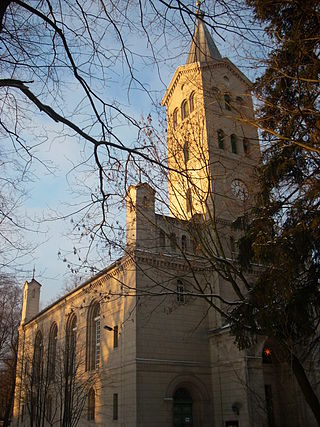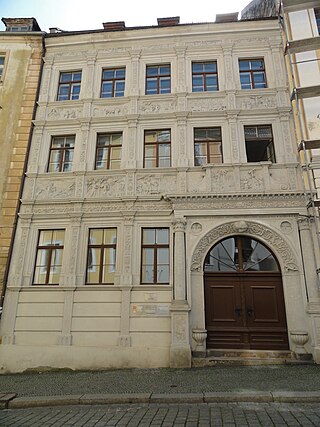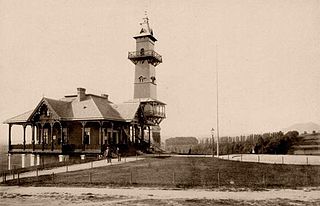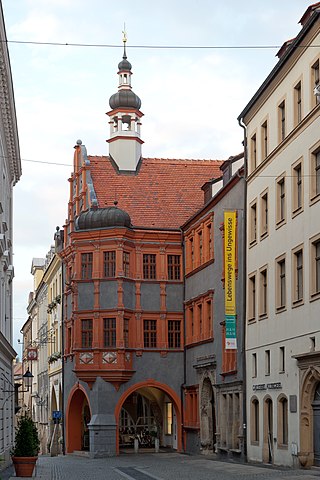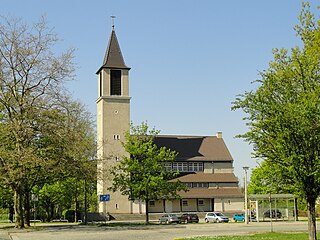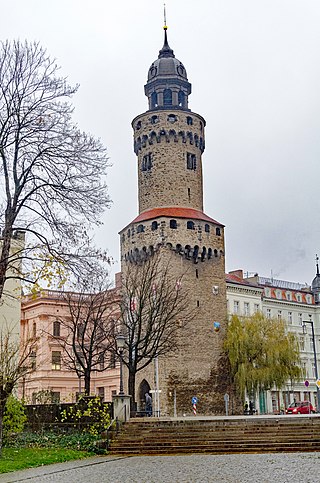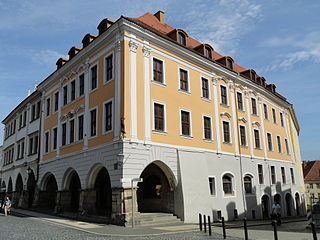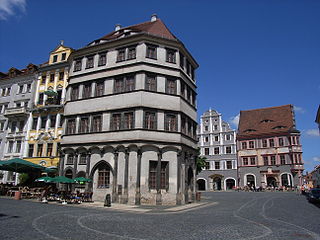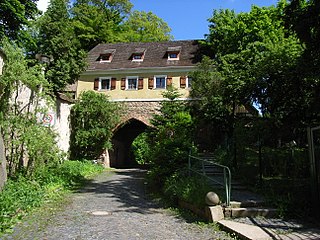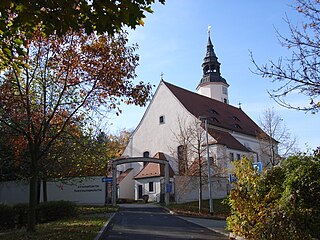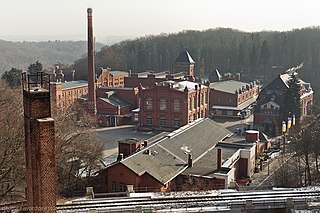39 Sights in Görlitz, Germany (with Map and Images)
Legend
Welcome to your journey through the most beautiful sights in Görlitz, Germany! Whether you want to discover the city's historical treasures or experience its modern highlights, you'll find everything your heart desires here. Be inspired by our selection and plan your unforgettable adventure in Görlitz. Dive into the diversity of this fascinating city and discover everything it has to offer.
Sightseeing Tours in Görlitz1. Stadtkirche St. Peter und Paul
The parish church of St. Peter and Paul in Görlitz, known as St. Peter's Church for short, towers over the Neisse Valley. It dominates the historic old town with its copper-roofed high roof and the pair of towers visible from afar; it is located about 700 m west of the 15th degree of longitude.
Wikipedia: Pfarrkirche St. Peter und Paul (Görlitz) (DE), Website, Heritage Website
2. The Holy Sepulchre
The Holy Sepulchre in Görlitz, also known as the Görlitz Jerusalem, was created as a religious synthesis of the arts that stretches from the crypt of the Church of St. Peter and Paul across the urban space to the Holy Sepulchre. It is one of the most important sights of the city. The Holy Sepulchre Chapel in the city on the Neisse, which became the model for many comparable complexes due to its early time of construction, is a smaller copy of the Jerusalem original from the High Middle Ages, the accuracy of which has not been achieved in any other replica of the Holy Sepulchre in Germany. It was deliberately integrated into the landscape. The original Holy Sepulchre in Jerusalem was contemplated by the future mayor Georg Emmerich and Agnete Fingerin when they undertook a pilgrimage to the Holy Land.
3. Dreifaltigkeitskirche
The Holy Trinity Church is a Protestant church in Görlitz, Germany. It was built between 1234 and 1245 as the monastery church of the Franciscan monastery on today's Obermarkt. In 1564 the monastery was converted into a grammar school, the church served as a school church and since 1712 as a parochial church.
Wikipedia: Dreifaltigkeitskirche (Görlitz) (DE), Website, Heritage Website
4. Cultural Centre Synagogue of Goerlitz
The Görlitz Synagogue is a Jewish congregation and synagogue, located on Otto-Müller-Straße, in Görlitz, Germany. Built between 1909 and 1911 in the Art Nouveau style, the synagogue was the main place of worship for the city's Ashkenazi Jewish community. Despite an arson attack, the synagogue was one of the few synagogues in the area to survive Kristallnacht, sustaining only minor damage. The damage was lessened as firefighters ignored the Nazi German orders to let the synagogue burn. With the city's Jewish population depleted, the unused synagogue became a ruin in the following decades.
Wikipedia: Görlitz Synagogue (EN), Website, Heritage Website
5. Schlesisches Museum
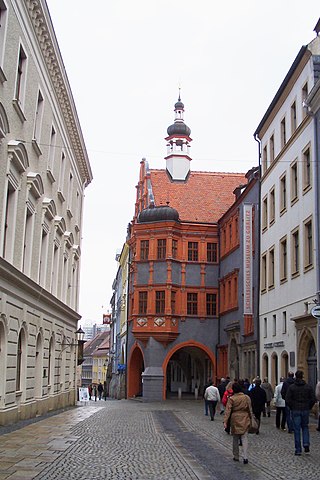
The Silesian Museum in Görlitz was opened on 13 May 2006 in an architecturally newly composed complex that combines four historic buildings: the Schönhof, the Mittelhaus, the building at the Fischmarkt, both of which date from 1832, and the Hallenhaus at Untermarkt 4.
6. Stadthalle Görlitz
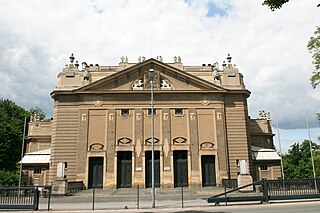
The Stadthalle is a concert hall in Görlitz, Germany. From its opening in 1910 until its closure in 2005, the building has been used for a variety of cultural events, including concerts, sporting events and trade fairs. A planned renovation was cancelled in 2012. The Förderverein Stadthalle Görlitz e. V. is committed to the preservation of the cultural monument.
7. Girl with the Shell
The Muschelminna, also called Toberentzbrunnen after its architect Robert Toberentz, is a fountain built in 1887 on the Postplatz in the city of Görlitz. The name originated from the vernacular that referred to the bronze statue standing on the marble pedestal. The statue was melted down during World War II. Since 1994, a faithful replica has been on display on the fountain.
8. Annenkapelle
The Anne Chapel on Görlitz's Marienplatz was built between 1508 and 1511 by the council architect Albrecht Stieglitzer as a memorial chapel for the Görlitz merchant Hans Frenzel the Rich (1463–1526). It was dedicated to St. Anne – Frenceslas' patron saint. Later it was used as an orphanage and prison church. Today, the former chapel is used as a gymnasium and auditorium of the adjacent Annenschule.
9. Church of Our Lady
The Frauenkirche is a three-aisled hall church in the late Gothic style. The church was once located at the gates of the city of Görlitz. In the meantime, however, it is located in the middle of the center and shapes the image of the city center. In the autumn of 1989, it was the starting point for the prayers for peace in the city.
10. Joliot-Curie-Gymnasium
The Joliot-Curie-Gymnasium is a general education school in the secondary education sector that leads to the university entrance qualification. The school, which emerged from the Luisenschule, is located on the north side of Wilhelmsplatz in the East Saxon city of Görlitz. It is one of two grammar schools in the city and is under their sponsorship. The Gymnasium offers the natural and social science profiles.
11. Wilhelmsplatz
The rectangular Wilhelmsplatz in the southern city centre is the largest Görlitz town square with an east-west extension of over 200 m and a north-south extension of around 100 m. The centre of the square is a large lawn surrounded by flower beds as planting ribbons. A row of hedges and trees separates the green square from the busy Jakobstraße in the west. Wilhelmsplatz is located between the city center and Görlitz train station.
12. Senckenberg Museum für Naturkunde Görlitz
The Senckenberg Museum for Natural History Görlitz or Senckenberg Museum für Naturkunde Görlitz in Görlitz, Germany is a natural history museum with focus on zoology, botany and geology. Since 2009, the museum has been part of the Senckenberg Gesellschaft für Naturforschung with headquarters in Frankfurt/Main. The main field of research is soil biology. In the years 2006 to 2017 the number of visitors was between 25,000 and 34,000, in the year of the 3rd Saxon State Exhibition 2011 it was even 47,000.
Wikipedia: Senckenberg Museum for Natural History Görlitz (EN), Website
13. Sonnenorgel
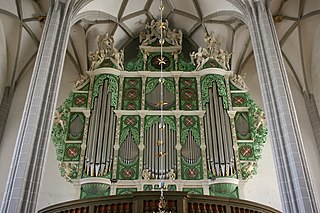
The sun organ in the church of St. Peter and Paul in Görlitz is a special feature. Its façade from 1703 is provided with 17 suns from organ pipes. The current work was built in 1997 by Mathis Orgelbau.
14. St Nicholas’ Church
The Nikolaikirche is a profaned Gothic hall church in Görlitz, the easternmost city in Germany. It is surrounded by the Nikolaikirchhof and is used as an exhibition and memorial space. The owner is the Evangelische Kulturstiftung Görlitz.
15. Waidhaus

The Woad House is the oldest secular building of Görlitz. During its rich history it served various purposes and underwent numerous alterations. The common name Woad House is based on the woad that was stored in this building in the 16th century.
16. Ratsapotheke
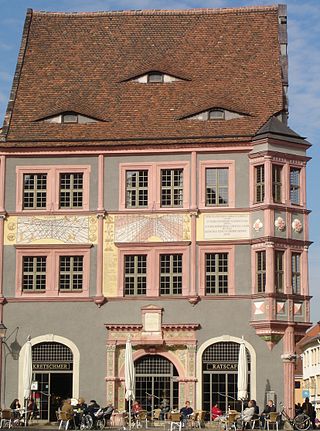
The Ratsapotheke, also known as the Struve Pharmacy, is one of the most famous town houses in the historic old town of Görlitz. The Renaissance building is located on the northern part of the Untermarkt and is the corner house to the confluence with Peterstraße. On the side facing the Untermarkt, the house bears two sundials by Zacharias Scultetus – a brother of the Görlitz astronomer and mathematician Bartholomäus Scultetus. The Renaissance gable of the house faces Peterstraße.
17. Vierradenmühle
The Vierradenmühle was one of three large flour mills in the city of Görlitz. But it also served as a fulling mill for clothiers and tanners. In its place there is now a turbine house for the generation of electricity and an inn that has taken up the name Vierradenmühle again.
18. Obermühle
The Obermühle was one of the three large flour mills of the city of Görlitz on the Lusatian Neisse. The mill was discontinued in 1994, but parts of the buildings are still used as a restaurant and guesthouse today. The Obermühle is home to Germany's easternmost beer brewery.
Wikipedia: Obermühle (Görlitz) (DE), Website, Heritage Website
19. Obermarkt
The Upper Market Square in Görlitz is the largest square in the historic part of the town. It was laid out in 1250 together with the Lower Market Square. Both are connected via the Bretheren Street (Brüderstraße). While the Lower Market is mostly bordered by Renaissance buildings, the Upper Market has many buildings from the Baroque and Wilhelminian periods. It is therefore the gateway to the historic part of the town. Important buildings on the market include Reichenbach Tower, Kaisertrutz and Holy Trinity Church (Dreifaltigkeitskirche).
20. Ochsenbastei

The Ochsenbastei in Görlitz is part of the former city fortifications near St. Peter's Church. While the actual "Tor an der Kahle" was demolished in 1834, the rotunda of the bastion and the ox kennel were preserved and are now protected as cultural monuments.
21. Frauenturm (Dicker Turm)
The Thick Tower erected in 1250 is part of the historic fortification of Görlitz. The 46-metre (151 ft) tall tower is the most massive tower in the city. Its walls in the lower part reach a thickness of 5.34 metres (17.5 ft), thus the name of a thick tower. Apart from it, the Nikolai Tower and the Reichenbach Tower are still preserved. In total, Görlitz had four large watchtowers and defense towers.
22. Nikolaizwinger
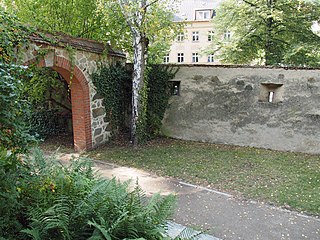
The Nikolaizwinger as one of the two preserved remains of the double city wall ring around Görlitz is now a green space. It is located at the entrance of Nikolaistraße to Nikolaivorstadt. The Zwinger, together with four city towers, many bastions and mighty gates, originally protected the city of Görlitz. The only one that has survived is the corner bastion bordering it, the Hotherbastei. The large, recognizable embrasures for cannons of the Hotherbastei indicate its use to secure the Nikolai and Neisse suburbs. In 1953/54, the Nikolaizwinger was redesigned into a garden by the citizens of Görlitz according to designs by the garden architect Henry Kraft as part of the National Reconstruction Work. In the 1990s, these structures were taken up again in a modified form.
23. Erlöserkirche
The Church of the Redeemer is a Protestant church building in the Görlitz district of Kunnerwitz. The church was built at the end of the 1830s and is located at the western end of the village together with the adjacent cemetery.
24. Biblisches Haus
The Biblical House is a town house in Görlitz's old town. The house got its nickname because of its reliefs on the façade on the first and second floors. They show scenes from the Old and New Testaments. It is located on Neißstraße, the connection between Untermarkt and the Old Town Bridge over the Lusatian Neisse and, along with the Schönhof, is one of the most famous Renaissance buildings in the city. In its western neighboring house – the baroque corner house at Neißstraße 30 – is the Görlitz Museum of Cultural History.
25. Weinberghaus
The Weinberghaus is a Swiss-style wooden building on the slope of the vineyard in Görlitz's Südstadt. The vineyard house was used as an excursion restaurant until the mid-1980s and has been closed since then. Right next to the house is the Weinbergturm – an observation tower also made of wood. From the uppermost of the two walkways, there is a view from the Neisse floodplains in the east over the Weinlache, the Volksbad area, the Weinhübel district and the Berzdorfer See in the south to the Landeskrone in the west. The building ensemble is located on the property An der Landskronbrauerei 902 at the southern end of the street.
26. Frenzelhof

The Hallenhaus Untermarkt 5 is a protected cultural monument located opposite the town hall on the Untermarkt in Görlitz. Built in the 15th century, the Frenzelhof is one of the oldest hall houses in Görlitz. For the construction phase around 1500, there are a number of historical references that are associated with the name Hans Frenzel.
27. Schönhof
The Schönhof is the oldest Renaissance-building in Görlitz, Germany. The building on Bretheren Street 8 (Brüderstraße) was constructed by Wendel Roskopf in 1526 over the surviving stone foundations after the town fire in 1525.
28. Christuskirche
The Christuskirche is a Protestant church building in the Rauschwalde district of Görlitz. The church was built at the end of the 1930s and is located to the southwest, set back a little on Diesterwegplatz.
29. Reichenbach Tower
The Reichenbach Tower probably built in the 13th century and first mentioned in 1376 is the western part of the historic fortification of Görlitz. With a height of 51m it is the tallest of the three fortified towers in Görlitz..
30. Brauner Hirsch
The Brauner Hirsch is a baroque town house in the town of Görlitz in Upper Lusatia, Germany. The corner house is located on the eastern side of the Untermarkt and on Neißstraße, which continues towards the Old Town Bridge over the Lusatian Neisse.
31. Fischmarkt

The fish market is a square on the southern edge of the historic old town of Görlitz. Compared to the two other large town squares in the old town, the Untermarkt and Obermarkt, it is one of the younger street layouts in the historic city centre.
32. Brüderstraße
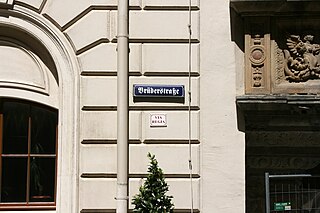
The Brüderstraße in Görlitz is part of the historic city centre and has numerous buildings from the Renaissance. It connects the Görlitz Obermarkt with the Untermarkt and is part of the Via regia. It is named after the Franciscan brothers, to whose former monastery on the Obermarkt the Brüdergasse led.
33. Nikolaiturm
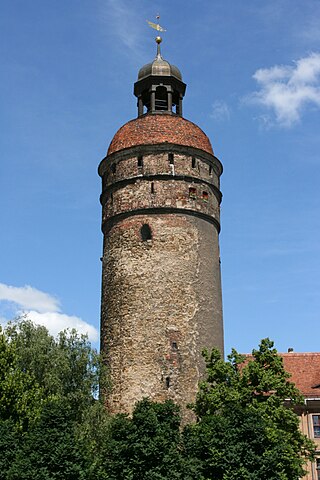
The 45m tall Nikolai Tower probably erected before 1250 is part of the historic fortification of Görlitz. It is located inside the inner part of Görlitz between the old town and the historic nikolai suburb (Nikolaivorstadt). Together with the Thick Tower and the Reichenbach Tower three of four fortified towers are still preserved in Görlitz.
34. Waage
The Waage is a Renaissance house in the town of Görlitz in eastern Upper Lusatia. It is located on the Untermarkt and is part of the so-called Zeile in the middle of the square. The scales structurally close the row on the south-eastern side.
35. Finstertor
The Finstertor, also known as the Poor Sinner's Gate, was part of the fortification of the Görlitz suburbs. It formed the northern entrance to the Nikolaivorstadt, which was surrounded by a mud wall and fences. The ogival passageway had a portcullis. The Dark Gate is the only surviving gate of the fortifications of the suburbs.
36. Landeskrone
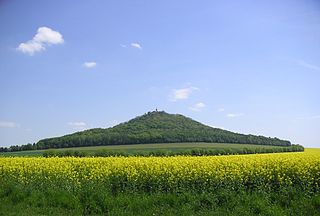
The Landeskrone is a hill in Upper Lusatia that is known as the Hausberg or "local hill" of the town of Görlitz. It is situated in eastern Saxony, Germany, close to the eastern border with Poland. On its western side is the municipality of Markersdorf.
37. Hoffnungskirche
The Hoffnungskirche is a Protestant church building in Görlitz-Königshufen. It was rebuilt in 1998 as a reconstruction of the village church of German-Ossig with the original ceiling paintings and the baroque interior. The parish belongs to the church district of Silesian Upper Lusatia of the Evangelical Church of Berlin-Brandenburg-Silesian Upper Lusatia.
38. Landskron Brau-Manufaktur
Landskron Brau-Manufaktur Görlitz Dr. Lohbeck GmbH & Co. KG is a brewery in Görlitz that employs 70 people. It goes back to the Görlitzer Aktien-Brauerei, founded in 1869, and with some buildings still in operation today, it is one of the oldest producing industrial monuments in Germany. The beer matures in cellars 12 metres deep for 40 days, longer than usual. These fermentation rooms from 1869 are listed as historical monuments.
Wikipedia: Landskron Brau-Manufaktur (DE), Website, Heritage Website
39. Neues Rathaus
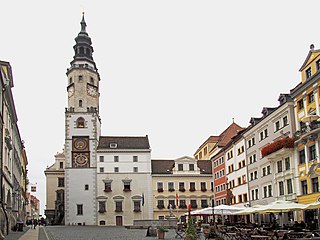
The town hall of the city of Görlitz has been the place of municipal administration, power and jurisdiction since about 1350; in 1369 it is documented for the first time as a town hall by a document of the Görlitz council. Its magnificent interior dates back to the Renaissance period. It consists of several connected buildings at Untermarkt 6–8 and is now the seat of several offices.
Share
How likely are you to recommend us?
Disclaimer Please be aware of your surroundings and do not enter private property. We are not liable for any damages that occur during the tours.
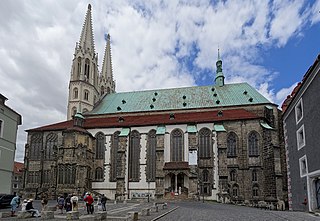

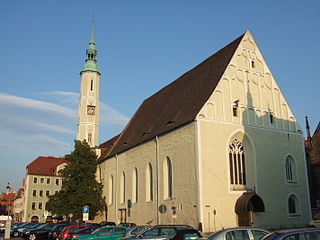
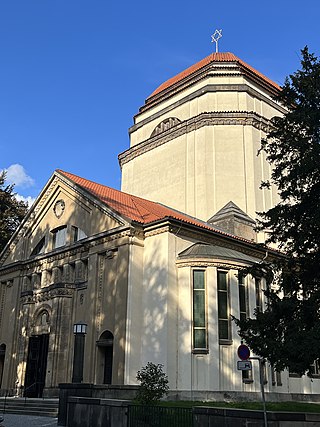
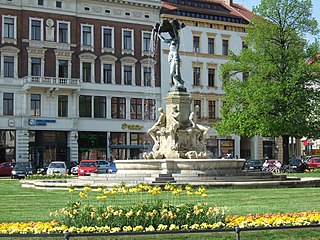
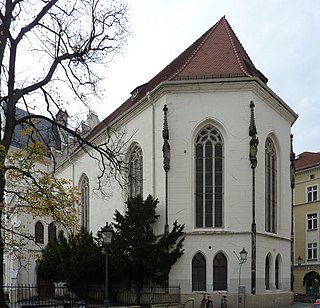
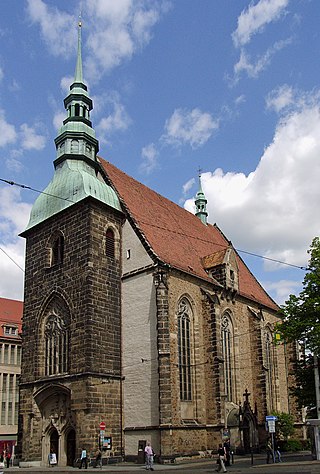
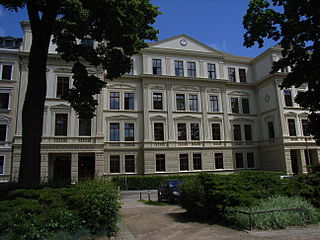
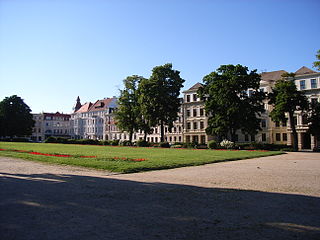
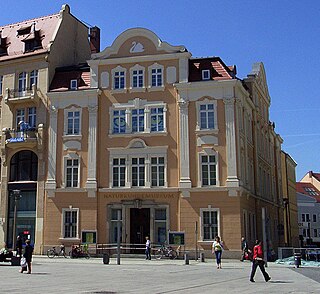
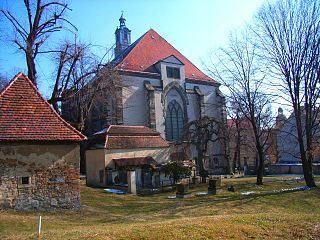
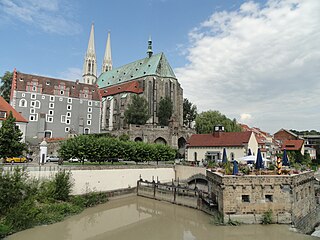
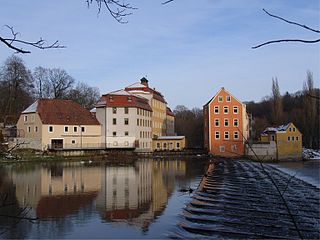
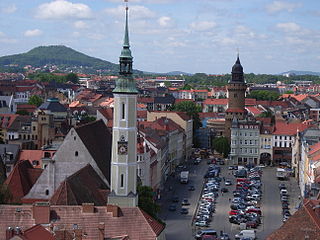
.jpg)
